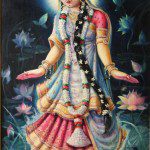The well respected Himalayan Academy and their guru Subramuniyaswami put out a book several years ago called How To Become a Hindu. Over the next few weeks I’ll be reading the chapters and discussing each one individually. Today we’re looking at the ninth chapter: Embracing Hindu Culture
(Book can also be downloaded free here: http://www.himalayanacademy.com/view/how-to-become-a-hindu)
This guru has had a profound impact on my identity as a Hindu. Not through this book, but through his Dancing With Siva book, which I stumbled upon and read as a teenager.
His philosophy is summed up right here:
“Therefore, to become fully Hindu means fully adopting the attitudes, customs and protocols of Hinduism.”
He’s a big proponent that being Hindu means embracing Hindu culture and he’s going to give us some tips in this chapter on exactly what that is.
I think he paints with too broad a brush in his opening, saying that Western culture is concerned with the needs of the individual while Eastern culture is about respecting others. Certainly in general Western culture does focus on the individual, but can you really say that deciding to become a Hindu when no one else in your family is and even if your family is unhappy or uncomfortable with it is to embrace a culture of respecting one’s family above one’s own desires?
And not all Westerners are focused on themselves above their family and elders. It really depends on the subculture and, dare I say, the individual.
“Each religious culture naturally embodies the beliefs and worship of that religion, as followers live out their convictions and goals at all levels of life.”
I think he’s right about that. My religion permeates my life and every thing that I do grows out of Hinduism in some way.
To be cultured, he says, is to conduct ones self according to higher nature. I agree that is a great goal. He then describes some of the “most important for new converts and adoptives to incorporate into their lifestyle.”
These include such things as:
Respect for Elders
Name Protocol
Feet Touching
Darshan (Seeing of the Divine)
Dakshina (money given to priests and gurus)
Purity (in food, flowers, offerings, and use of the right hand)
Exchange of Prana energy
Modesty
The role of women
Guests
There are some really good tips here. Things like “Conversations are not held inside or through doorways. This is considered inauspicious.” These are indeed great tips for someone new to Indian and Hindu culture.
I could do without jabs at Western culture like “The wife walks a step or two behind her husband, or if walking by his side, a step or two back, always giving him the lead. In the West, the reverse of this is often true.”
It’s no wonder that new Hindus are often eager to embrace the “exotic” culture of the east when our own lifestyle is looked at with such contempt. Those naughty Western women are just too assertive, too bold, too aggressive. This stereotype and that of the Asian woman as demure and gentle are not doing women any favors.
I guess since Sumbramuniyaswami has been a monk since the 1930s he probably hadn’t had any genuine interaction with a woman in decades before he wrote this book.
Still, that part aside, I think this chapter is packed with practical and useful information!












